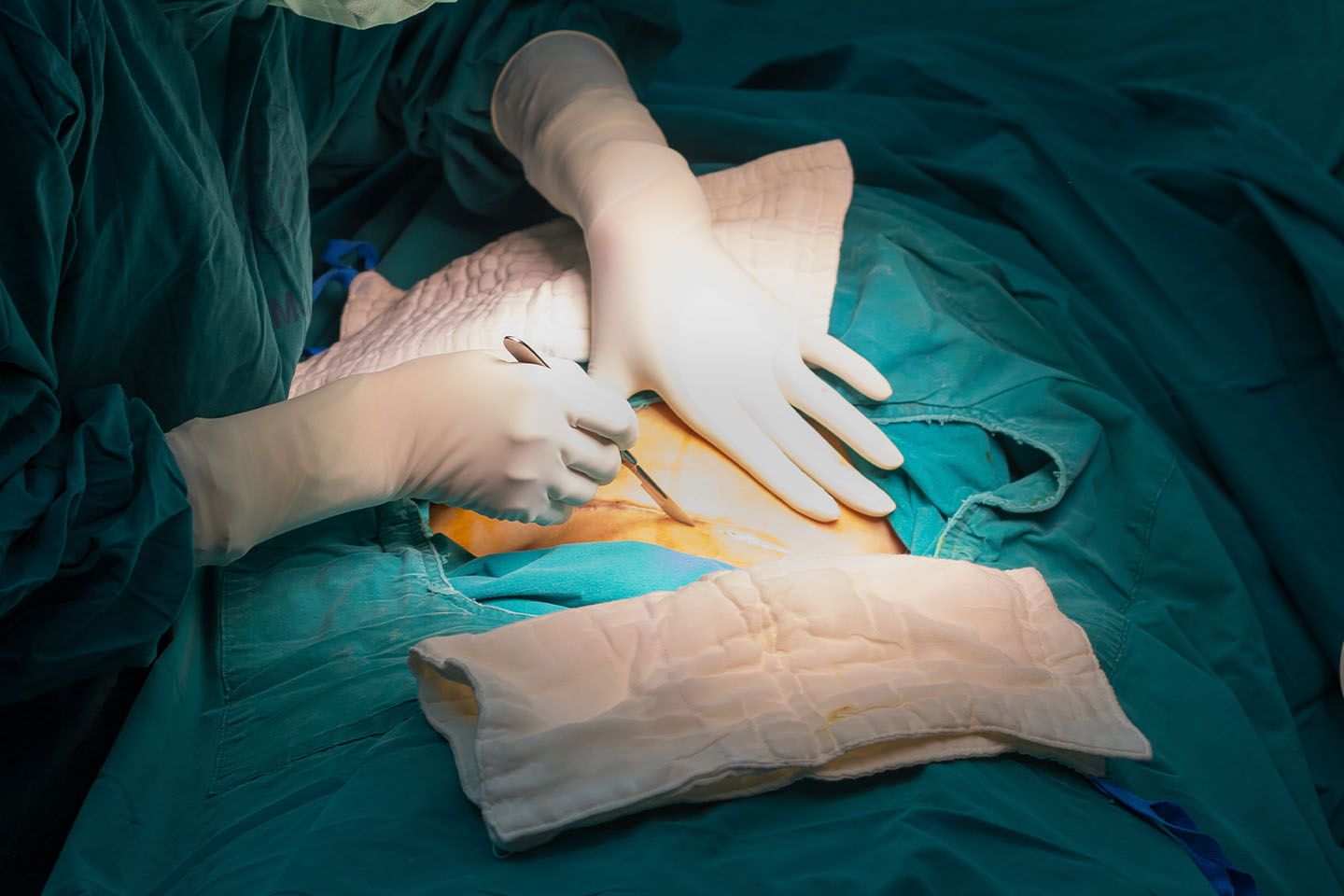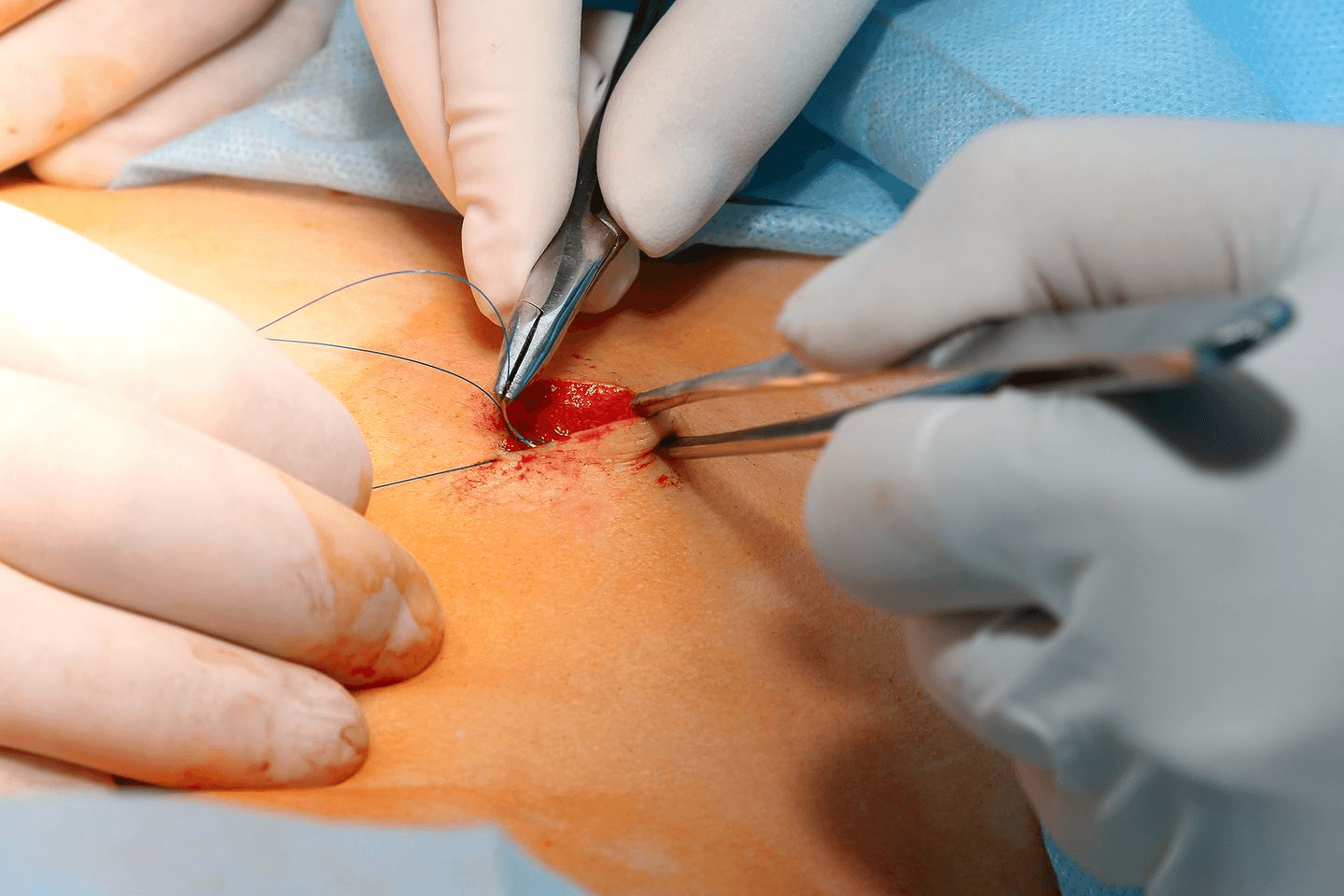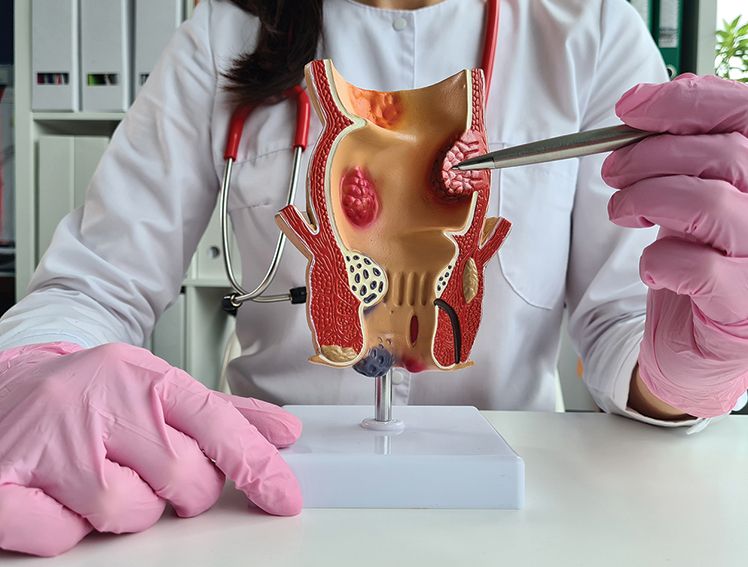
What is a caesarean section?
A caesarean section, commonly known as a c-section, is a surgical delivery method where a baby is born after an incision in the mother's abdominal wall and uterus. This procedure is deemed necessary when complications prevent the baby from being delivered vaginally.
A c-section surgery can be planned if there are indications that a vaginal birth is impossible, or it can be performed as an emergency if issues arise during labour. However, a vaginal delivery is typically considered the safest method for the baby if no severe medical problems arise during pregnancy or labour.
A caesarean section is a significant surgical procedure; although complications are infrequent, they can be severe. So, it is crucial to be well-informed before deciding on this procedure.
Reasons to undergo a caesarean section
There are many different reasons why a c-section may be a requirement, including:
There are complications during pregnancy, such as pre-eclampsia or gestational diabetes, that could harm the mother or baby.
Foetal distress means the baby is not getting enough oxygen or is in distress.
Abnormal baby position, such as breech or transverse position, can make a vaginal delivery difficult or dangerous.
Labour complications, such as failure to progress or cephalopelvic disproportion, which means the baby's head is too big to fit through the mother's pelvis,
Previous c-sections may make a vaginal birth riskier.
Maternal preference is when a woman has had a traumatic vaginal birth experience in the past or has a medical condition that makes a vaginal birth difficult or dangerous.
Suppose the mother is expecting twins, triplets, or more. Twins are frequently born vaginally, but if there are triplets or more, the mother will almost likely require one.
Types of C-section
There are three types of caesarean sections:
Planned (elective) c-sections: These are scheduled in advance when the mother or baby has a medical condition that makes a vaginal delivery risky. Some doctors suggest a planned c-section for babies diagnosed with congenital issues to reduce delivery complications. Non-medical reasons may lead some women to prefer c-section surgery over vaginal birth.
This choice has certain advantages and disadvantages for the mother and the child. It can also have an impact on future pregnancies.
Unplanned C-sections: Most C-sections are unplanned since the need for one does not emerge until considerably closer to or during labour. Moms in these circumstances had planned on having a vaginal birth. Yet just before the baby is born, the mother and the doctor determine that a C-section is the best course of action.
It might be upsetting and stressful when things change. Still, the medical team makes every effort to ensure that the birth experience is pleasant and safe for mother and child.
Emergency c-sections: The urgency of the procedure distinguishes an emergency caesarean from an unplanned one. These are done when problems arise during labour, such as when the baby is distressed, the mother is not progressing as expected or is exhausted because of long labour.
Other issues requiring this procedure are when the mother's health conditions may not support a vaginal delivery, the umbilical cord is tangled around the foetus, or a womb ruptures. Emergency c-sections are done as quickly as possible to ensure the safety of the mother and baby.
C-section involves incisions in the mother's abdomen and uterus to deliver the baby. The type and location of the incision can vary depending on the mother's medical history, the size and position of the baby, and other factors. The mother's experience and the actual process for an emergency C-section will differ from the processes of a planned or unplanned C-section.
What Happens During C-section?
Overview of procedure during a caesarean section, or c-section surgery;
The mother receives surgical anaesthesia through spinal blocks or epidurals, which makes her awake but leaves her hip area numb. General anaesthesia becomes necessary during emergencies to perform the surgical procedure.
The surgical cut goes across the stomach area above the pubic bone.
Medical personnel divide the abdominal muscles rather than cutting through them during operative access to the uterus.
After delivery, the medical staff begins their assessment of the newborn by using an Apgar score while clamping and cutting the umbilical cord and gently removing the baby.
Surgical staff remove the placenta while suturing tissues of the uterus and seal the outer incision using stitches or surgical glue.
Following surgical intervention, the medical staff checks whether the mother shows any indications of infection, blood clot formation, or significant bleeding.
The surgical procedure usually takes about 45 to 60 minutes to complete. After surgery, women are taken to a recovery room, and most stay in the hospital for 2 to 4 days.
Risks and complications of C-section
The risks and complications of a caesarean section are as follows:
Infection in the wound as well as the uterus.
Blood loss, which may need a blood transfusion.
Damage to neighbouring organs like the bladder or bowel.
Blood clots, which can be deadly if they reach the lungs.
Adhesions are scar tissue bands that can grow in the belly and cause pain or intestinal blockage.
Recovery time is longer, and pain and discomfort are greater than vaginal birth.
Trouble breastfeeding owing to anaesthetic effects and the mother's extended recovery period.
Increased chance of future pregnancy difficulties, such as placenta previa and uterine rupture.
This is not a comprehensive list, and the risks and complications may vary depending on the case.
Government statistics from the World Health Organisation (WHO) show that C-section procedures make up 21% of global births, with the projection that numbers will increase to 29% by 2030.1
Meril Life offers specialized products that support C-section surgeries, including:
MITSU AB™ (Polyglactin 910 Sutures with Triclosan): These absorbable stitches help reduce the risk of surgical site infections by preventing bacteria from growing on the sutures.
MERIFEIM: A highly absorbent, natural dissolving sponge used to control bleeding during abdominal, gynecological, and urological surgeries.
These products are designed to promote faster healing and reduce complications in surgeries like C-sections and other related procedures.
Conclusion
A C-section may be needed because of certain health issues during pregnancy or unexpected problems that happen during labour. Whether the surgery is planned ahead or done in an emergency depends on the situation. While there are some risks with any surgery, C-sections can help keep both the mother and baby safe and reduce chances of injury. Every birth is different, so having clear information helps you and your doctor make the best and safest choice for you and your baby. Remember, it’s your body, your baby, and your decision.



